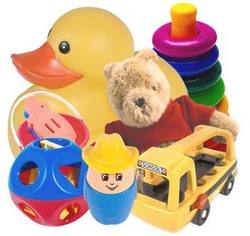
Since 75 percent of brain development occurs after birth, the activities children engage in stimulate and influence the pattern of the connections made between nerve cells. Toys help children to figure out how things work, pick up new ideas, build muscle control and strength, use their imagination, solve problems and learn to cooperate with others. A child spends the maximum hours in a day playing with toys. If these toys were replaced with toys for development, while playing a child will learn vital elements.
Toys for Physical Development
Description: Toys that aid the growth of children and help them become strong and healthy.
Wagon to steer and coast, brooms and shovels, small, but strong garden tools, balls, planks, jump ropes, scooters and tricycles, boxes, ladders, and boards, knock-out bench, and puzzles.
Wagon to steer and coast, brooms and shovels, small, but strong garden tools, balls, planks, jump ropes, scooters and tricycles, boxes, ladders, and boards, knock-out bench, and puzzles.
Toys for Sense Development
Description: Toys that help develop a child's sensory organs which control; touching, hearing, seeing, smelling, or tasting. Development of sensory organs is essential, as a child understands the world based on his or her senses.
Water toys, bubble pipes, musical instruments, toy piano, xylophones, sand toys, pegboards, large wooden beads and string, and puzzles.
Water toys, bubble pipes, musical instruments, toy piano, xylophones, sand toys, pegboards, large wooden beads and string, and puzzles.
Toys for Creative Work
Description: Toys that allow children to express and develop their creativity, perception, and imagination.
Clay or crayons and paints, colored paper, children's safety scissors, paste
Clay or crayons and paints, colored paper, children's safety scissors, paste
Toys for Make-Believe and Social Development
Description: Social development toys help children develop their knowledge of how others feel and think. they also support good character education.
Dolls with washable clothes, adult "dress-up" clothes, cars and airplanes, broom, sweeper, mop, dishes, play-store toys
Dolls with washable clothes, adult "dress-up" clothes, cars and airplanes, broom, sweeper, mop, dishes, play-store toys
